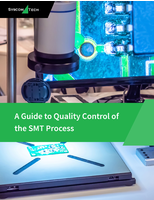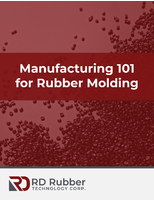Touchscreen Technology enhances force sensitive touchscreens.
Share:
Press Release Summary:
Quantum Tunnelling Composite (QTC(TM)), or QTC Clear(TM), force sensing material can be made into any size of force-sensitive touchscreen to replace current resistive touchscreen technologies or enhance capacitive one. At 6-8 micron thick, material provides multi-touch sensitivity and can be used in existing manufacturing procedures/equipment. Features stemming from force sensitivity include touch activation of capacitive matrix, 3D menu interoperability, and variable line width support.
Original Press Release:
Peratech's New, See Through QTC Clear Will Revolutionise Touch Screens
RICHMOND, North Yorks., England. Peratech, the innovators in touch technology, have developed a see through version of their award winning, Quantum Tunnelling Composite (QTC(TM)) material called QTC Clear(TM). This force sensing material can be used to create a whole new class of Force Sensitive touch screens that can completely replace current Resistive touch screen technologies or enhance Capacitive ones to create superior solutions with more features such as 3D input.
"Both Resistive and Capacitive touch screen technologies have their drawbacks," explained Philip Taysom, Peratech's Joint CEO. "Resistive is not very accurate and can't do multi-touch so it is becoming less popular than Capacitive, but the latter uses a lot of power constraining it to smaller screen sizes. Our new, QTC Clear touch screen design offers the best of both technologies without their drawbacks. It can be made in any size and provides multi-touch, high sensitivity with great accuracy, ultra low power consumption and additional intuitive features with the third dimension of pressure to more easily manipulate and control information on the screen."
Resistive touch screen manufacturers can upgrade to using QTC Clear and use their existing manufacturing procedures and equipment to produce this new class of Force Sensitive touch screens. Capacitive touch screen manufacturers can augment with the addition of QTC Clear to provide additional features from the force sensitivity such as touch activation of the capacitive matrix to save power, 3D menus, variable line widths, and more intuitive gaming interaction. Very little alteration is needed to the control electronics in either case except to take advantage of the new features.
The QTC Clear layer is only 6-8 microns thick with a transparency that is very similar to the existing touch screen technologies. This is sandwiched between two layers of ITO (Indium Tin Oxide), which is in turn sandwiched between two hard sheets, typically glass. It is so sensitive that it can detect deflections of only a few microns so that the top surface can be rigid and robust, e.g. glass, unlike current Resistive designs that have to be soft enough to deform easily making them susceptible to damage. QTC's unique properties means that virtually no current flows unless a force is applied. This overcomes the drawbacks of Capacitive designs that constantly draw current and create design challenges to overcome EMI issues.
QTC Clear is available under license from Peratech and has already been licensed to a leading touch screen manufacturer. Licensing terms are competitively positioned so that manufacturing costs are only slightly greater to reflect the additional commercial benefits that using QTC Clear brings.
Paul O'Donovan, Principal Analyst at Gartner's semiconductor division, commented, "This is a very interesting new technology that could revolutionise the whole touch screen industry from automotive to computers."
Background information on Capacitive and Resistive touch screens
Current Resistive touch screens designs use a sandwich of a soft top layer and a hard bottom layer with small spacer bumps to keep them apart. When the soft top layer is pressed it deforms and contact is made between two thin films of conductive material (ITO) on the inside of the two structural layers. The drawbacks are that the top layer has to be soft enough to deform easily when pressed which makes it vulnerable to damage by scratching etc. and it cannot be used to provide the increasing important multi-touch functionality. No current flows unless pressure is applied, there are no EMI issues and they can be made any size. They can be used with gloves and in any humidity conditions.
Capacitive touch screens have become more popular as they overcome the drawbacks of Resistive because they have a robust, hard top surface and provide multi-touch. However, the design uses a lot of current to provide the touch detection which is a constraint on screen size and potential interference issues that require careful design to overcome, making large Capacitive screen solutions expensive. Also gloves and high humidity prevent them from working.
About QTC
QTC's are electro-active polymeric materials made from metallic or non-metallic filler particles combined in an elastomeric binder. These enable the action of 'touch' to be translated into an electrical reaction, enabling a vast array of devices to incorporate very thin and highly robust 'sensing' of touch and pressure. QTC's unique properties enable it to be made into force sensitive switches of any shape or size. QTC switches and switch matrices can be screen printed allowing for development and integration of switches that are as thin as 75 microns.
QTC is also low power and interfaces can be designed with no start resistance so that without pressure, the switch draws no power and passes no current. Importantly, when pressure is applied, the resistance drops in proportion to the amount of pressure which allows sophisticated human machine interface designs that react to variations in pressure. QTC technology has no moving parts and requires no air gap between contacts. This makes it extremely reliable and suitable for integration into the thinnest electronic designs and with industry leading operational life.
About Peratech
Peratech is the inventor and world leader in Quantum Tunnelling Composite (QTC) technology. Already widely used in robotics and defence, Peratech commercialised its QTC technology at the beginning of 2006 and is currently working with a number of key technology clients who are implementing QTC sensing technology within their own products.
QTC materials give enormous flexibility in the design, shape, thickness and style of a switch or pressure sensor and can be made in a range of elastomeric forms, including emulsive coatings (down to thicknesses of 10 microns), 'bulk' silicone or rubber and textile forms. Peratech pioneered the creation of electronic switches made from textiles as early as 2001. QTC has been recognised through numerous International awards and accolades including "Tomorrow's World Industry Award 2002", "Saatchi & Saatchi Innovation Award 2000" and "European Electronics Industry Award 2004".
QTC materials have been used by organisations such as NASA, ILC Dover, Shadow Robotics and numerous government agencies world wide. Peratech also owns SOFTswitch the pioneering creator of textile switching and Eleksen, the world leader in touch sensitive interactive textiles for electronics interface design. Further information is available from www.peratech.com
For further information, please contact
Peratech Limited, Old Repeater Station, Brompton-on-Swale, North Yorkshire, DL10 7JH United Kingdom. Tel: +44 (0) 8700 727272 Fax: +44 (0) 8700 727273 Email: info@peratech.com www.peratech.com
Nigel Robson, Vortex PR, Island House, Forest Road, Forest, Guernsey, GY8 0AB United Kingdom. Tel: +44 (0) 1481 233080 Email: nigel@vortexpr.com
All trademarks are the property of their respective owners.




